Heroines of Film and Television
Heroines of Film and Television
Portrayals in Popular Culture
Edited by
Norma Jones, Maja Bajac-Carter,
and Bob Batchelor
ROWMAN & LITTLEFIELD
Lanham Boulder New York Toronto Plymouth, UK
Published by Rowman & Littlefield
4501 Forbes Boulevard, Suite 200, Lanham, Maryland 20706
www.rowman.com
10 Thornbury Road, Plymouth PL6 7PP, United Kingdom
Copyright 2014 by Rowman & Littlefield
All rights reserved. No part of this book may be reproduced in any form or by any electronic or mechanical means, including information storage and retrieval systems, without written permission from the publisher, except by a reviewer who may quote passages in a review.
British Library Cataloguing in Publication Information Available
Library of Congress Cataloging-in-Publication Data
Heroines of film and television : portrayals in popular culture / edited by Norma Jones, Maja Bajac-Carter, and Bob Batchelor.
pages cm
Includes index.
ISBN 978-1-4422-3149-8 (cloth : alk. paper) ISBN 978-1-4422-3150-4 (electronic)
1. Women in motion pictures. 2. Women on television. 3. Heroines in motion pictures. 4. Heroines on television. I. Jones, Norma, 1972 editor of compilation. II. Bajac-Carter, Maja, 1979 editor of compilation. III. Batchelor, Bob, editor of compilation.
PN1995.9.W6H465 2014
791.43'6522dc23
2013040492
 TM The paper used in this publication meets the minimum requirements of American National Standard for Information Sciences Permanence of Paper for Printed Library Materials, ANSI/NISO Z39.48-1992.
TM The paper used in this publication meets the minimum requirements of American National Standard for Information Sciences Permanence of Paper for Printed Library Materials, ANSI/NISO Z39.48-1992.
Printed in the United States of America
Acknowledgments
Heroines of Film and Television: Portrayals in Popular Culture would not have been possible without the support of Stephen Ryan at Rowman & Littlefield. As editors, we would also like to thank our contributors for being integral parts of this book. As a whole, your essays are creative and timely, and they allow for richer explorations of heroines in popular culture. We appreciate your works and contributions to further the understandings and readings of these heroic women.
Norma and Maja would like to thank Bob for giving us the encouragement and support to pursue this book project. We realize that as doctoral students, we are often more limited in our autonomy to initiate and then manage a book-length project such as this one. Bob, we would like to express our deep gratitude for your trust and guidance. You knew when to step in and when to let us go, and for this we thank you. We would also like to acknowledge our mutual advisor, George Cheney, in the College of Communication and Information at Kent State. We appreciate you trusting your advisees with the space to take on a book project while we were still in your classes. Thank you for being a fantastic mentor, teacher, and advisor.
Bob would like to acknowledge his colleagues at Thiel College, including department mates Victor Evans and Laurie Moroco. He would also like to thank Dean Lynn Franken and President Troy VanAken for their support and encouragement. Finally, it is a great honor to hold the James Pedas Professor of Communication positionmany thanks to James Pedas and his family for their continued support of Thiel College, including providing the funding for the James Pedas Communication Center.
We also have some individual acknowledgments:
Norma: I would like to thank my familythe Chus, Murphrees, Joneses, Rayburns, Yaghmaeis, Yangs, Chens, and Lipscombs. To my wonderful Brent, I am deeply grateful for you, and everything I do is only possible with you. I also want to thank Maja who is my wonderfully awesome friend.
Maja: I would like to thank my familymy mother Lidija who is an endless inspiration in my life, and my brother Vojislavmy friends, and Norma, my great friend and academic accomplice.
Bob: My family is incredibly supportive and kind, considering the fact that writing books necessitates long hours of writing and thinking time in virtual solitary. Thanks to my parents, Jon and Linda Bowen, for everything they do to make our lives infinitely better. My daughter Kassies bright smile and the love in her eyes brings laughter and joy into every moment. My wife Kathy is my pillar of strength and soul mate.
Introduction
What is popular culture? Is it culture left over from higher forms of art? Is it culture that most people understand and enjoy? Is it a space to interact and create shared meanings as we conduct our everyday lives? Or is popular culture a gravitational center that pulls, drags, and attracts people to interact with it, and perhaps, also to create it? In this book, we consider heroines in popular culture as the portrayals/representations of heroic women as influential in how we think about, interact with, and even conduct our lives. What are our boundaries and limitations? What can we achieve? And at the most basic level of identity, who are we?
By conceptualizing it as a gravitational force, and by interacting with popular culture as a constellation of meaning, we have opportunities to navigate and change our stars, so to speak, it in order to challenge and resist representations. Instead of relying on traditional forms of media production, and by using emergent technology, we have unprecedented access to interact with, read, and interpret these representations and then help others to re/imagine possibilities for social betterment. The stories we see, hear, feel, and interact with in popular culture oftentimes show us existing norms and values in our society. They can also mark shifting values and norms as our societies experience economic, social, and other changes. In that sense exploring heroines in popular culture allows understandings of women in traditional and resistant roles.
Heroines are becoming more prevalent with more varied representations/portrayals in films, television shows, and video games. Heroines are sometimes simultaneously worshipped as goddesses, reviled as villainesses, raped and beaten as victims, lusted after as sex objects, placed on pedestals as positive role models, and of course rescued as damsels. Some fight with brute strength and weapons, while others seduce, love, lead, and resist domination. As women were excluded from the heros journey, their roles and embodied meanings are, at times, traditional, ambiguous, contested, and even controversial. Thus, in this book, we offer spaces for contributors to highlight, critically interrogate, and share re/imagined heroines.
We arranged the chapters in four thematic, but also overlapping, sections. We start with heroines on television, move on to heroines on film, discuss diversity concerns, and then conclude with heroines that cross media boundaries. We start our exploration of heroines with female heroes on television. Suzy DEnbeau and Patrice M. Buzzanell consider Joan Harris as an erotic heroine in Mad Men. Katie Snyder offers Nancy Botwin as a symbol to fight against domination in her reading of Weeds. Jennifer K. Stuller describes a lineage of heroines that is not derived from male heroes in her reading of Lost Girl. From the small screen, we move on to heroines on film.
Jeffrey A. Brown challenges the ideological linkages between femininity and being a powerless victim in The Girl with the Dragon Tattoo. Maura Grady analyzes the Bride and two volumes of Kill Bill to understand a heroines claim to masculine power. Ryan Castillo and Katie Gibson offer a subversive rereading of Sin City to allow for spaces of female audience empowerment. Pedro Ponce reviews 27 Dresses
Next page


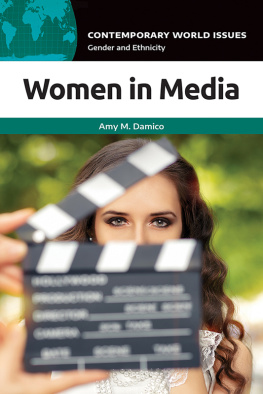
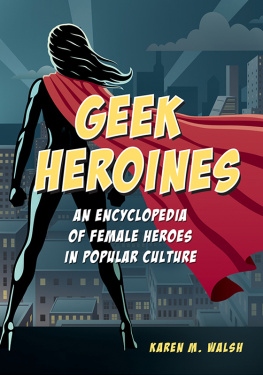
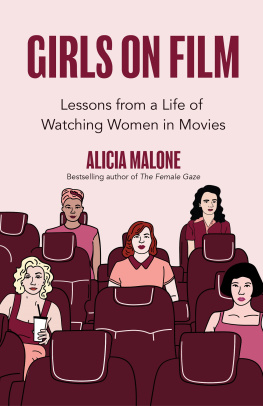

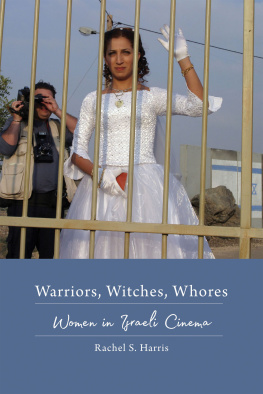
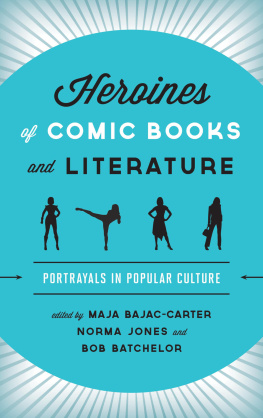
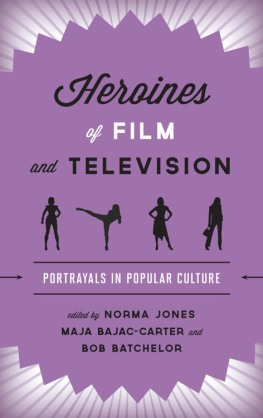
 TM The paper used in this publication meets the minimum requirements of American National Standard for Information Sciences Permanence of Paper for Printed Library Materials, ANSI/NISO Z39.48-1992.
TM The paper used in this publication meets the minimum requirements of American National Standard for Information Sciences Permanence of Paper for Printed Library Materials, ANSI/NISO Z39.48-1992.